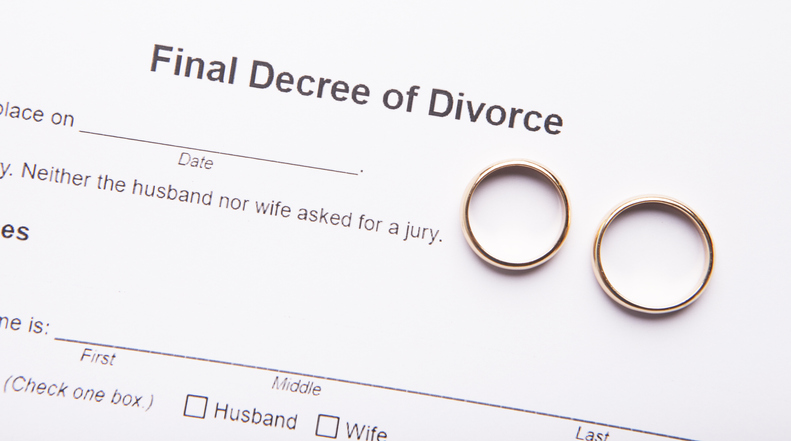Divorce can be a daunting and emotionally challenging experience, but if you and your spouse are in agreement on all key issues, the process can be far more manageable. Filing an uncontested divorce is often a quicker, more affordable, and less stressful alternative to contested divorces. In an uncontested divorce, both parties agree on the terms, such as property division, child custody, and alimony, allowing the process to move forward with less conflict.
In this complete guide, we will walk you through every step of filing uncontested divorce Texas paperwork and explain what you need to know to make the process as smooth as possible.
What is an Uncontested Divorce?
An uncontested divorce occurs when both spouses agree on all aspects of the divorce without the need for court intervention. This means you and your spouse can agree on issues such as:
• Division of property and debts: How will the couple’s assets and liabilities be divided?
• Child custody and support: How will the children be cared for and supported financially?
• Spousal support (alimony): Will either spouse receive or pay alimony, and for how long?
• Visitation rights and parenting plans: The schedule for each parent’s time with the children.
If both parties agree on all of these matters, filing an uncontested divorce becomes a relatively simple process, especially if you know how to complete the necessary divorce paperwork.
Step 1: Verify Eligibility for an Uncontested Divorce
Before you start filing uncontested divorce paperwork, make sure you and your spouse meet the requirements for an uncontested divorce. While requirements may vary by state, you’ll typically need to meet the following conditions:
• Residency: One spouse must have lived in the state for a certain period of time (usually 6 months to 1 year) before filing.
• Agreement on terms: Both spouses must agree on all major divorce issues such as asset division, child custody, and spousal support.
• No pending legal disputes: There should be no active disputes regarding the marriage.
Once you verify that you meet the criteria, you can begin preparing the divorce paperwork for an uncontested divorce.
Step 2: Gather the Necessary Documents
The next step in filing uncontested divorce paperwork is to gather all the documents needed to complete the divorce. Here’s a checklist of documents you will likely need:
• Marriage Certificate: To confirm the legality of the marriage.
• Financial Disclosure Forms: These forms will help disclose both parties’ financial situation, including income, assets, debts, and liabilities.
• Property Division Agreement: A list of how marital property (homes, cars, bank accounts, etc.) will be divided.
• Child Custody and Support Agreement (if applicable): If you have children, you will need to document your custody arrangement, visitation schedule, and child support terms.
• Parenting Plan (if applicable): A detailed plan for how parenting responsibilities will be shared.
• Separation Agreement: This outlines the terms of the divorce, such as who will live in the marital home and how debts will be divided.
• Decree of Divorce: This is the final document that will be signed by the judge to make the divorce official.
Make sure to have all these documents ready before you proceed with the divorce paperwork. This will help you avoid any delays in the process.
Step 3: Complete the Divorce Paperwork
Completing the divorce paperwork is one of the most important steps when filing uncontested divorce documents. While the specific forms may vary by state, the key documents generally include the following:
• Petition for Divorce: This document formally requests that the court dissolve the marriage.
• Separation Agreement: This agreement outlines how the couple has agreed to divide their property, handle child custody, and address other key issues.
• Financial Affidavits: These documents outline both spouses’ financial information, including their income, expenses, and assets.
• Parenting Plan: If children are involved, this outlines how custody will be shared and how visitation will work.
• Final Divorce Decree: Once the court reviews the agreement, this document finalizes the divorce.
It is essential to fill out each of these forms accurately. Any mistakes or missing information can delay the process or lead to complications later on.
Tip: Double-check everything
Before submitting the paperwork, make sure to double-check everything for accuracy. Small mistakes can cause delays or even result in the rejection of your paperwork.
Step 4: File the Divorce Paperwork with the Court
Once you’ve completed the necessary forms, the next step is to file the divorce paperwork with the court. Here’s what you need to do:
• Submit the paperwork: File your completed forms with the court clerk in the county where you or your spouse reside.
• Pay the filing fee: Most jurisdictions require a filing fee that can range from $100 to $500. Check with your local court to confirm the fee.
• Serve your spouse: Even in an uncontested divorce, you may need to formally notify your spouse that the paperwork has been filed. In many cases, your spouse will need to sign a waiver acknowledging receipt of the documents.
Once the paperwork is filed, the court will review the documents and determine if everything is in order. If no issues arise, the court will typically approve the divorce, and a final hearing may not be necessary.
Step 5: Wait for Court Approval
After submitting the divorce paperwork, you’ll need to wait for the court’s approval. If everything is in order and both parties are in agreement, the court will issue a divorce decree. Depending on your jurisdiction, a judge may sign the decree without requiring a hearing, or there may be a brief hearing to finalize the divorce.
Once the judge signs the decree, the divorce will be official, and both parties can proceed with their separate lives.
Step 6: Finalize Your Divorce
Once the divorce decree is issued, the process is complete. Be sure to:
• Obtain copies of the final divorce decree for your records.
• Update important documents such as your will, financial accounts, and insurance policies to reflect your new marital status.
• Change your name (if applicable), and update your driver’s license, Social Security records, and other legal documents.
Common Mistakes to Avoid When Filing Uncontested Divorce Paperwork
While the process of filing uncontested divorce paperwork Texas may seem straightforward, there are common mistakes that can delay the process. Here are some tips for avoiding those errors:
• Not fully agreeing on all terms: Make sure that both spouses are on the same page about property division, child custody, and financial matters before filing.
• Incomplete paperwork: Missing forms or incorrect information can lead to delays. Ensure that all forms are properly completed before submission.
• Failure to meet residency requirements: Confirm that you meet the residency requirements in your state before starting the process.
• Not consulting an attorney: While uncontested divorce is simpler, it’s still wise to consult with a lawyer to ensure that the terms are fair and legally sound.
Conclusion
Filing an uncontested divorce can be a straightforward and efficient way to end a marriage when both parties are in agreement. By following the step-by-step process outlined in this guide, you can ensure that the divorce paperwork is completed accurately and that the process moves forward smoothly. With fewer legal battles and less emotional strain, an uncontested divorce offers a faster, more cost-effective way to navigate this difficult transition.
Remember, while you can file for an uncontested divorce on your own, it’s always a good idea to seek legal advice to ensure that your rights are protected. By staying organized, double-checking your paperwork, and being fully prepared, you’ll be able to complete your divorce efficiently and move forward with peace of mind.




